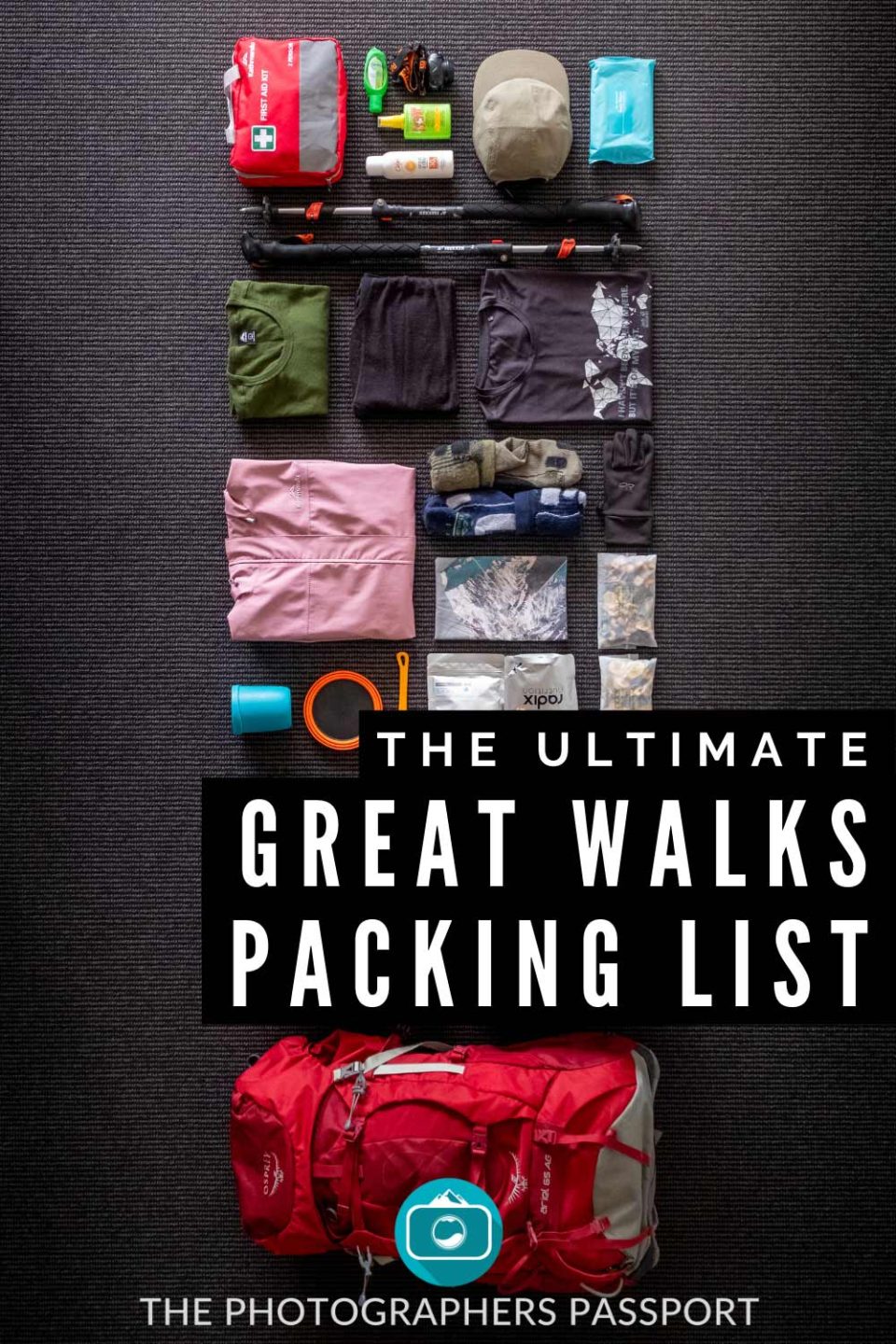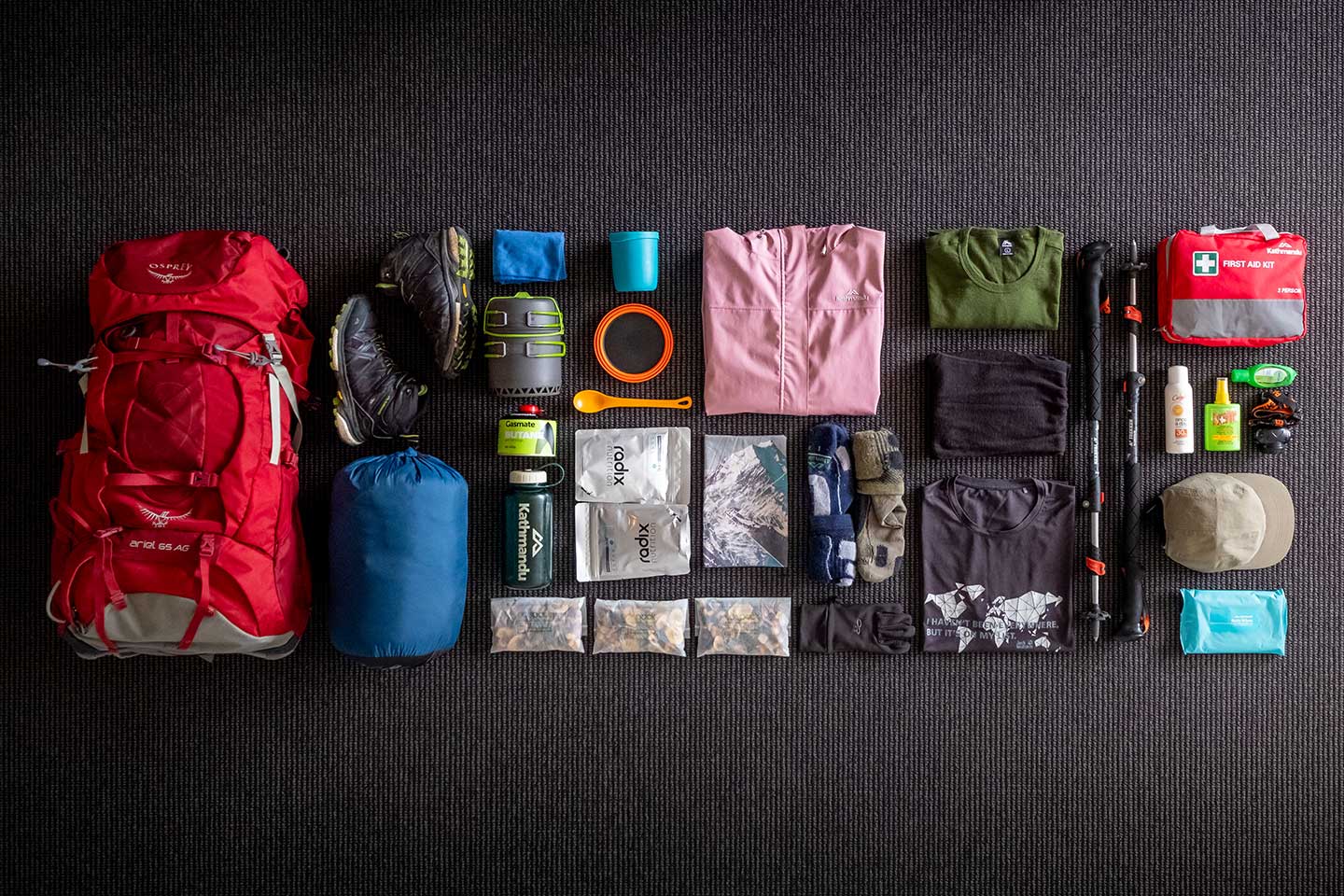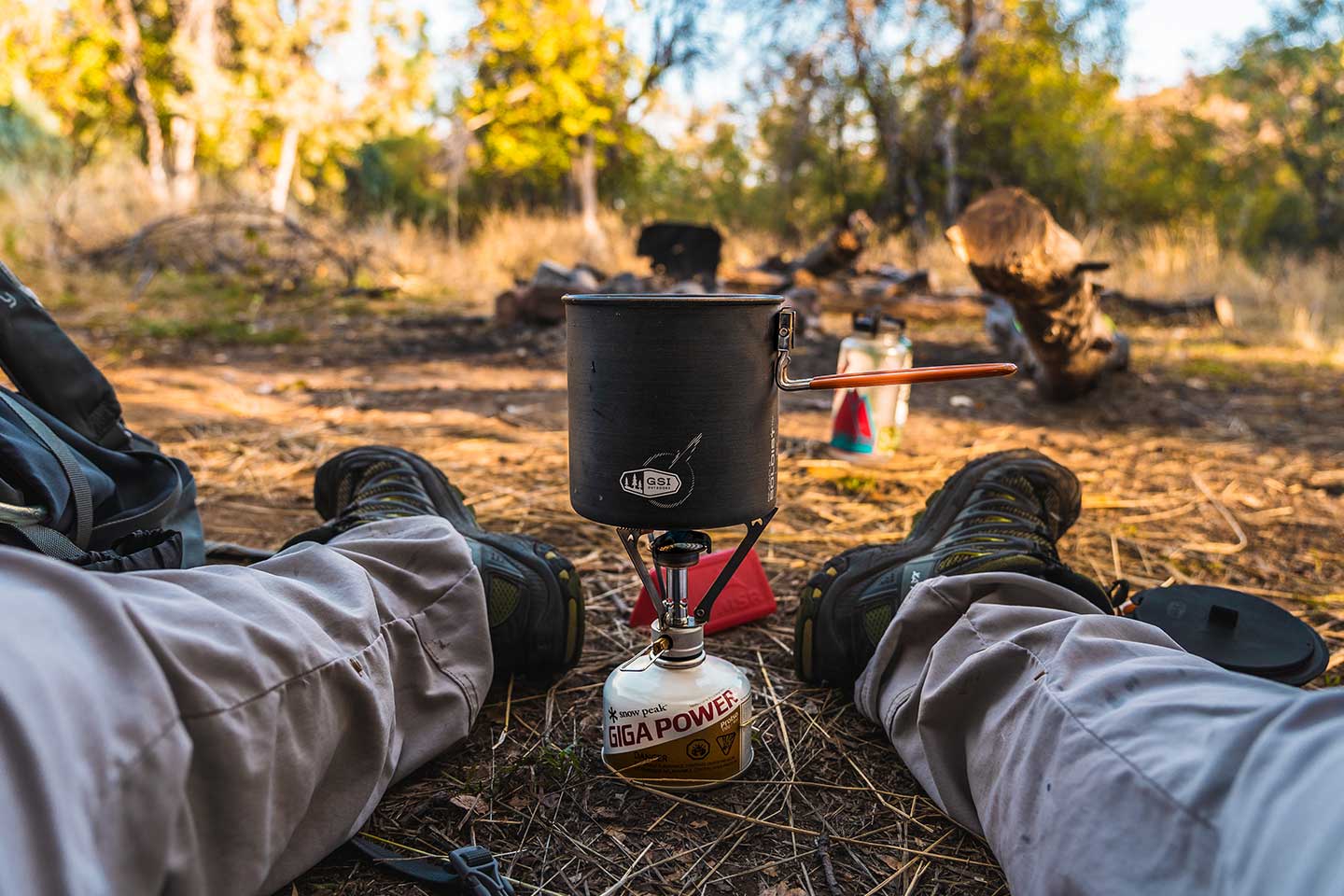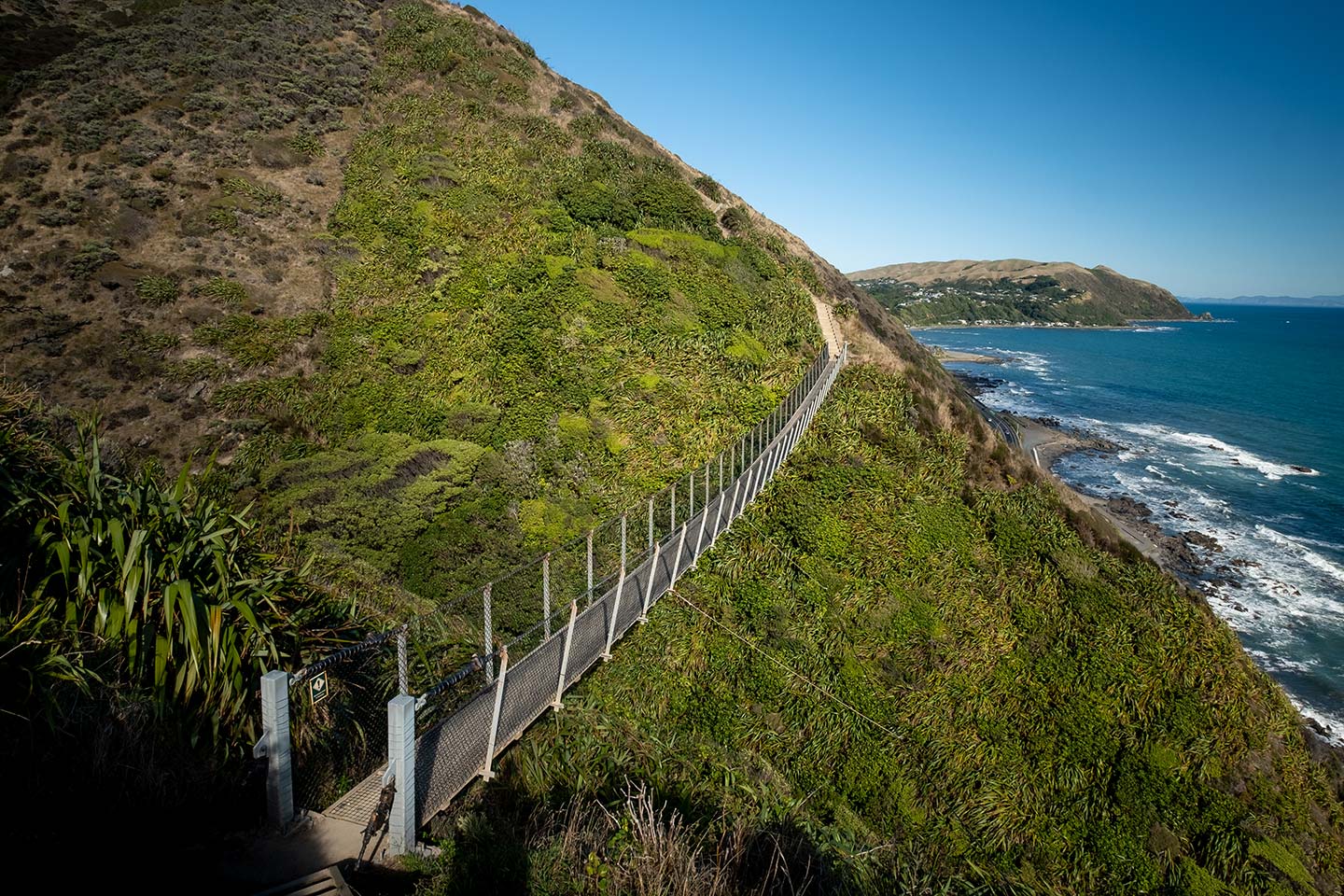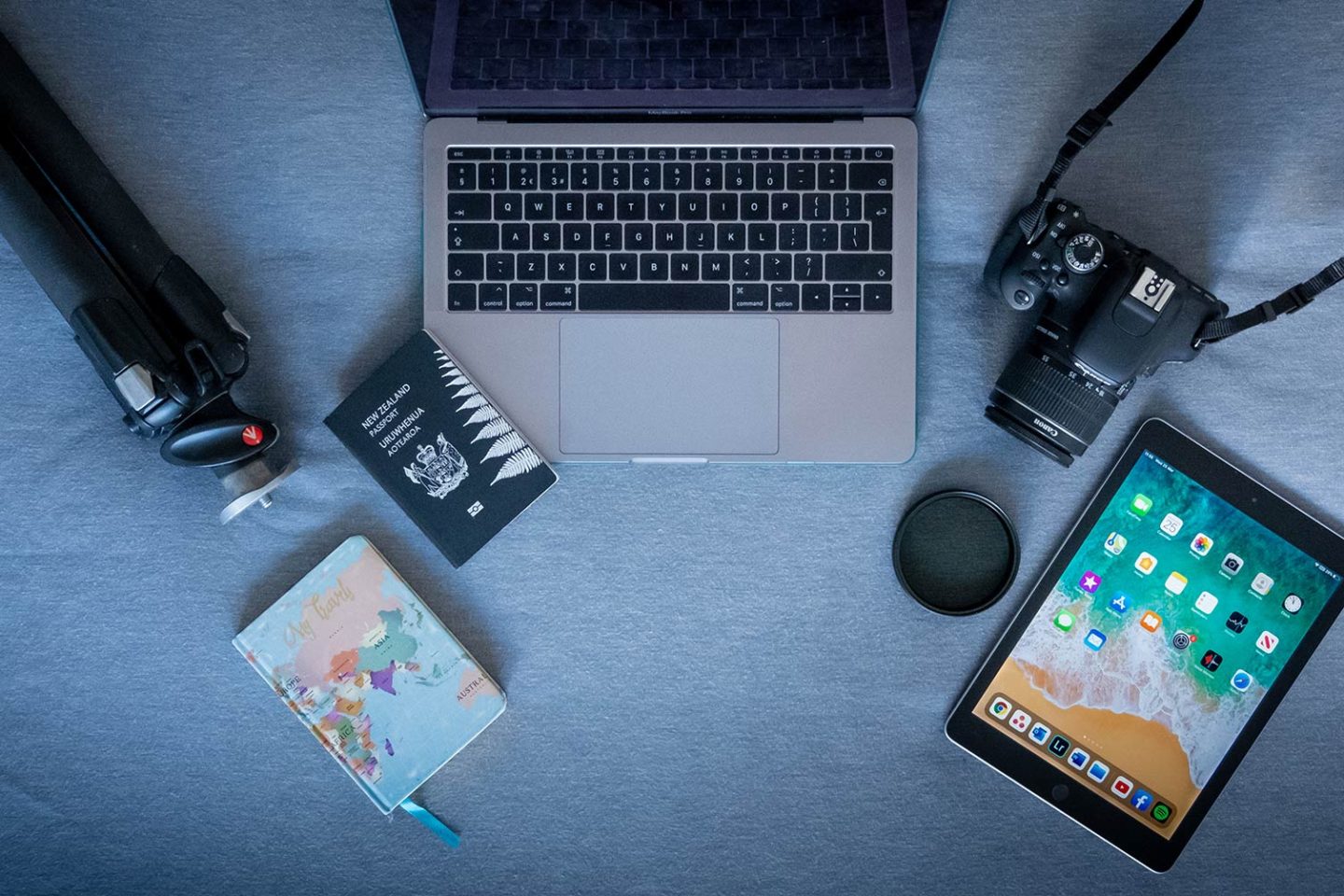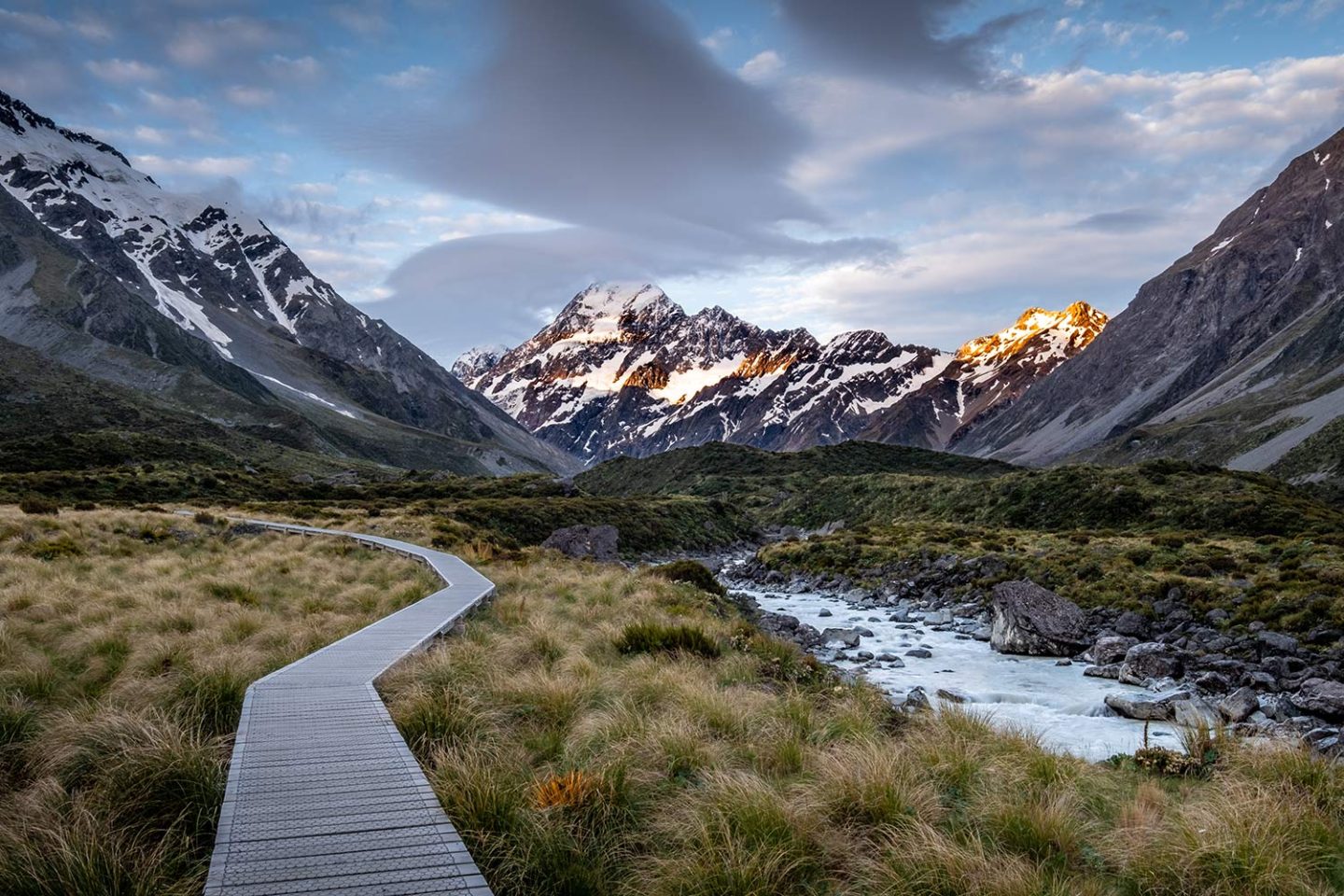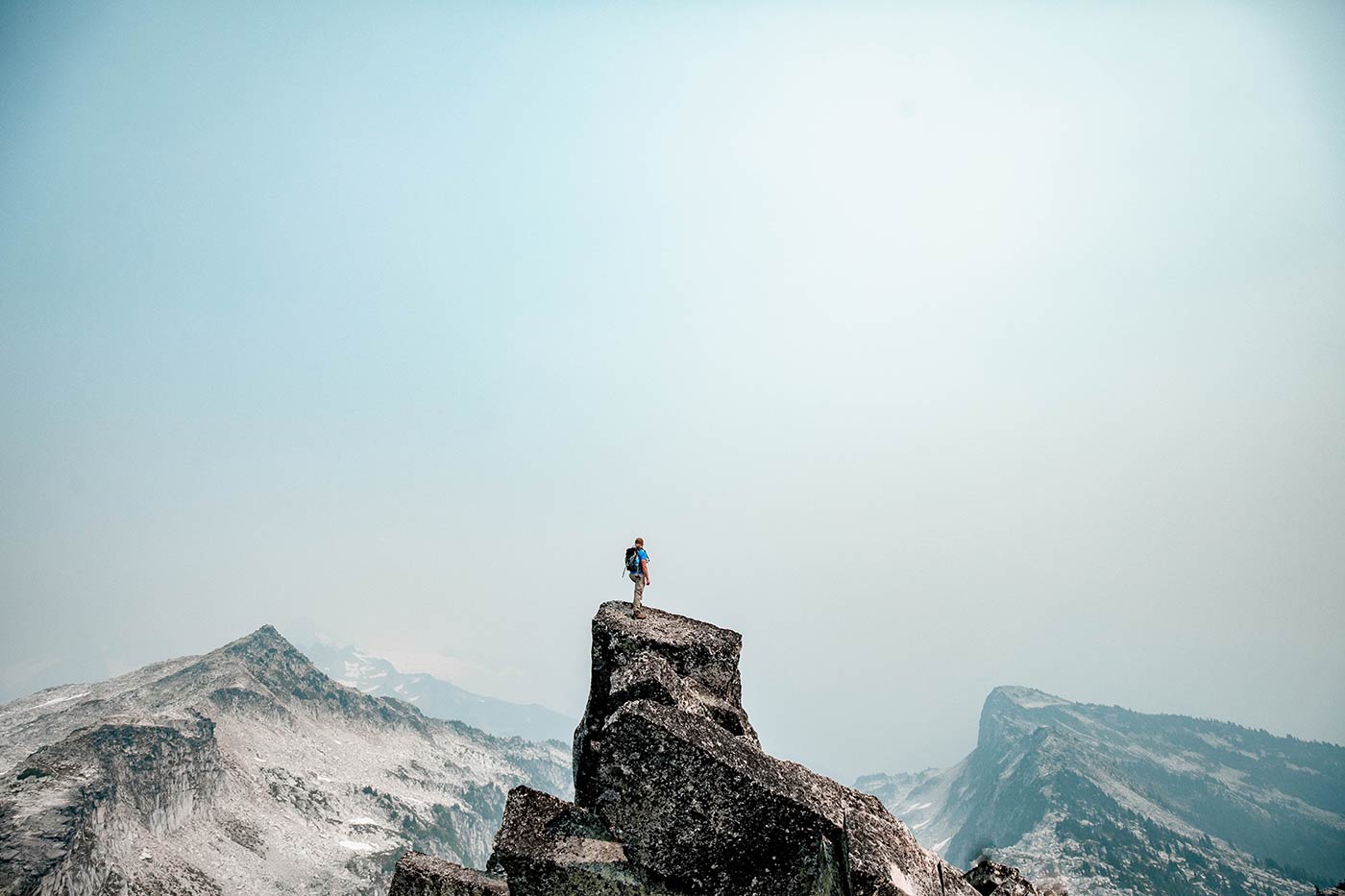This article may contain affiliate/compensated links. For full information, please see our disclaimer here.
The Great Walks of New Zealand are known the world over for their top-notch tracks that travel through spectacular scenery. There are 10 Great Walks in total, that journey through a diverse set of landscapes. On these walks you will find volcanoes, lakes, mountains, fjords, limestone caves, forests, beaches and loads of other incredible scenery. They are a truly extraordinary experience, whether you’re used to life on the trail or a complete beginner. If you happen to be new to hiking, I’m sure you’ll be wondering what to bring along with you – I know I was before my first Great Walk. Well don’t worry, in this article you will discover exactly what you need on your Great Walks packing list.
We will be covering absolutely everything from the gear you need, all the way to the food to take to help fuel yourself. With that said, let’s get started so you can start planning your very own Great Walks packing list.
How to Pack for a Great Walk
There’s an art to packing your bag for a multi-day hike such as a Great Walk. You need to take just enough to keep yourself comfortable and alive, but not so much that you end up breaking your back. Admittedly this is something that can really only be learned through your own experience on the trail. Sometimes what may feel like an essential item while you’re at home packing your bag, doesn’t always translate to an essential item on the trail. A Great Walk or multi-day hike of any kind gives a tremendous opportunity to strip life back to the bare essentials, it’s amazing just how little you actually need.
This Great Walks packing list will act as a guide to help you figure out what you need to take along with you. With your own experience on the trail you will be able to cater this list to your own wants and needs, as everyone is different. It is worth noting that this packing list is for those that will be walking the tracks during the Great Walks season, which starts at the end of October and finishes at the end of the following April. Those that wish to brave the trails during the winter will need additional gear on their Great Walks packing list to what is listed here.
The Great Walks Packing List
Gear
If you’re new to tramping or backpacking, then the Great Walks offer a perfect introduction to this way of life. Tracks are very well formed and the backcountry hut system that is in place means that you can carry a lot less in your pack. All 10 of the walks have a great hut system in place which means generally you will not have to take a tent or sleeping pad with you. However, with the exception of the Milford track, if you prefer to camp, most walks do have campsites that you can use. Be aware though that freedom camping is not permitted on the Great Walk tracks so book your campsites in advance.
The gear you need for a Great Walk can be very basic, the bare minimum you need to take is your pack, a sleeping bag, and a water bottle. I do however like to take a few more items to make my journey that little more enjoyable.
Pack
The most important part of your Great Walks packing list is a pack to keep all your gear and food strapped to your back while you’re on the trail. When it comes to packs, although there are plenty of great options on the market, I have always found Osprey to be my favourite. Osprey specialises in creating hiking and backpacking packs that stand the test of time.
When it comes to choosing your pack size, I believe the smaller the better. If you have a smaller pack you are less likely to overpack and more likely to have an easier time on trail. A 50 litre capacity seems to work for most people. Osprey has a few options, the Stratos 50 for men and Sirrus 50 for women are good options and reasonably affordable. However, my top choice would be the Atmos AG 50 for men and the Aura AG 50 for women, which both use Osprey’s Anti-Gravity system.
Osprey Atmos AG 50
This pack is perfect for your Great Walk, it’s a perfect fit, extremely well ventilated and very comfortable. The Anti-Gravity system helps to evenly distribute the weight of the pack on your shoulders and hips.
Osprey Aura AG 50
A feature rich women’s specific pack that is incredibly comfortable and well ventilated. The Anti-Gravity suspension makes it feel like you’re carrying less weight and wraps around your body smoothly, allowing you to enjoy every mile.
Pack Liner
A pack liner is used to keep your gear dry if it happens to rain. It essentially provides a weather-resistant lining for the inside of your pack. Try get a liner made from cordura as these types of liners last longer.
Sleeping Bag
There are a number of considerations to take into account when deciding the type of sleeping bag to purchase. You need to decide what shape bag to get, which type of fill will insulate the bag and also determine the temperature rating you need. There is a lot that goes into choosing the perfect sleeping bag; if you would like to learn more about choosing a sleeping bag for yourself check out this great article.
There is a plethora of options but I personally really like Sea to Summit sleeping bags and actually everything else they make. They have a selection of down and synthetic bags but it is their synthetic bags that really interest me. Many people may prefer down bags as they are a lot lighter and compress down to a smaller size than synthetic. However, I prefer synthetic sleeping bags for ethical reasons.
Tent
Not a necessity for a Great Walk as you can mostly stay in the backcountry huts while on trail, however if you would like a little more privacy, a tent can be a useful piece of gear. I like the ultralight tents created by Zpacks and Tarptent. These use your hiking poles to create the structure of the tent so that you don’t have to carry tent poles in your pack.
MSR Elixir 2 Backpacking Tent
If you’re looking for a more conventional tent, the MSR Elixir 2 is a great value option that is quick to assemble. The Elixir is a great addition to your Great Walks packing list whether it’s your first backpacking trip or just your next.
Sleeping Pad
If you are going to be camping on the Great Walks, another item you will need in addition to a tent is a good quality sleeping pad. Thermarest is my go-to choice when it comes to sleeping pads as they specialize in this area. The Thermarest Neo Air pads are great as they are extremely lightweight and pack down to a very small size.
Therm-A-Rest NeoAir XLite Sleeping Pad
The NeoAir XLite is a high-performance lightweight sleeping pad that packs down to an extremely small size. It is also available in a women’s specific pad which is shorter in size and warmer.
Trekking Poles
Trekking poles are not essential to have on trail, in fact many people prefer to hike without poles. I have, however found in my experience that hiking poles can be extremely useful especially when ascending or descending slopes. If you’re looking for a cheap pair of hiking poles to get started with, the Macpac C3 trekking poles are a good pair of starter poles. If you want something a little more durable though, Black Diamond make some great poles.
Black Diamond Alpine Carbon Cork Trekking Poles
A great pair of trekking poles made from carbon fibre to allow for an extremely lightweight and sturdy construction. This pole is designed to endure four-season alpine terrain, a perfect addition to your Great Walks packing list.
Water Filtration
There are a few ways to make sure the water you’re drinking while on trail is safe; you can use water purification tablets, boil it, or my favourite method, use a water filter system. Generally the water you find in huts and campsites on the Great Walks is rain water that has been collected into water tanks which means it is untreated. Many trampers are happy enough to drink this water without treating it but I like to use a Sawyer Squeeze water filter just to be safe.
Sawyer Squeeze Water Filter
The Sawyers Squeeze removes 99.9% of bacteria such as salmonella, cholera and E.coli as well as 99.9% of protozoa such as giardia and 100% of microplastics. It’s incredibly lightweight and easy to use ensuring you have clean water in the backcountry.
Water Bottle or Hydration Bladder
This is an obvious piece of gear that goes without saying, as without water you will not survive. I like to take a water bottle and a hydration bladder but this is just my personal preference. I use the hydration bladder during the day when I am walking as it allows for easy access. I like to take the water bottle for use when I am at the hut or campsite and in case I feel I need to take more water than my bladder will allow.
Cooking Equipment
When it comes to cooking, most of the huts have gas cooking facilities, so that’s one less thing you don’t have to add to your Great Walks packing list. This can help lighten the load a little and on most tracks there is no need for you to carry your own gas cooker. I have walked a few of the tracks with my gas cooker and fuel in my pack and not used it once. It is however important that you take pots, cutlery, plates and a lighter to ignite the cooker. This rule only really applies if you will be staying at the huts along the trail. If you are camping you will need to take your own stove and fuel as campers don’t have access to the cooking facilities in huts.
If you are walking the Rakiura Track, Lake Waikaremoana or Abel Tasman Coast Track you will need to take a backpackers gas stove and fuel with you as huts on these tracks don’t have cooking facilities. You will also need to take your own stove if you will be staying at Brown Hut or Gouland Downs Hut on the Heaphy Track.
Gas Burner
When it comes to a stove you want to make sure you have something that is small, lightweight but can boil in a quick time. My personal stove of choice to be added to my Great Walks packing list is a titanium backpacker stove made by Kathmandu. It is compact, light and extremely powerful and is actually able to boil a litre of water in 3.5 minutes, which is very quick. I have also heard that the MSR Pocket Rocket works very well, although I haven’t actually used it myself. Also don’t forget to get yourself a fuel cannister to attach to your stove, as you won’t be able to cook without it!

Pots
You will need something to cook in, whether you’re cooking up your own grub or just boiling some water to add to your dehydrated meals. This doesn’t have to be anything too fancy but try to keep it lightweight. I use this 2-piece pot set from Kathmandu that consists of a 1 litre capacity pot and a smaller 500ml pot. The larger pot has a heat exchange in the base, which allows for a quicker boil time.
Plates, Bowls, Cups and Cutlery
Not the most interesting part of this Great Walks packing list, but certainly an important part. If you’re just drinking water and eating dehydrated meals, you can probably get away with just taking a spoon. However, if you want a morning coffee or to cook yourself something up you’ll need a few additional items.
I love the range of lightweight dinnerware items by Sea to Summit. They have the X range, which includes bowls, cups and pots that fold down to a small size. The Delta range is also very impressive, I love the Delta mug, Delta long handled spoon and the Delta plate.
Clothing
For multi-day hikes such as the Great Walks, when it comes to clothing it’s a good idea to have a set of clothes to hike in and another dry set to change into at night. This is an area where it is easy to overpack so be careful, I’ve definitely made this mistake before. Below is a quick rundown of clothing items you may want to consider taking along with you.
Hiking Boots or Trail Runners
When it comes to footwear it really is personal preference, some people like the support provided by hiking boots, and others prefer lighter trail running shoes. This is something you can decide for yourself, just as long as they are nice and sturdy you should be fine.
Socks
With socks, you want to find a good pair made from either wool or a synthetic material like polyester as these do well to wick moisture. If you wear hiking boots, I like the NuYarn Ergonomic hiking socks made by Kathmandu. If you wear trail runners, Injinji Toe Socks work well to prevent blisters between toes. Don’t forget to make sure you add at least two pairs to your Great Walks packing list, one for your hike and another for wearing at night.

Shorts
The weather in New Zealand can get hot so it’s good to have a pair of shorts to hike in. The only thing I would mention when it comes to choosing shorts is to make sure they are made from a quick-drying material. I like to wear running shorts as they are very lightweight and dry incredibly quickly.
Trousers or Leggings
If you’re female you may prefer to wear leggings instead of shorts. I can’t say I have much experience wearing leggings, however, my partner likes to wear leggings made by Aim’n and Echt.
You may also want to take some trousers to wear, these prove to be very useful if you happen to be somewhere where sandflies are rampant.
Base Layers Top and Bottom
New Zealand weather is very unpredictable so it’s good to be prepared for all conditions. I like to take merino base layers for my top and bottom. Although I don’t always use them during the day I will usually wear them during the night.
Icebreaker make the best merino base layers but they are quite expensive. If you’re looking for something a little more affordable, Macpac make good merino base layers.
Shirt
You’ll want to take some kind of shirt to hike in, preferably something quick-drying and moisture-wicking. I like to take a short sleeve T-shirt and a long sleeve T-shirt, I like the ones made by Macpac.
Mid Layer
A mid layer made of either fleece or wool is a good idea as the temperatures can get pretty low sometimes, especially if you’re in an alpine environment. Patagonia make great fleece layers that are very stylish, but you will have to pay a price for this. Although not stylish, Kathmandu also make some nice, more affordable mid layers.
Rain Jacket
A decent rain jacket is essential on any trip in the backcountry you never know when the heavens could open! If you’re looking for something that will perform whatever the weather, look for a coat with Gore-Tex, like the Kathmandu Aysen Gore-Tex jacket, which is available for men and women. If you’re looking for something a little more affordable, the Kathmandu Trailhead rain jacket is very good, and is also available for men and women.
Buff or Neck Gaiter
This is the most versatile item you will likely add to your Great Walks packing list. Use it as a neckerchief, headband, wristband, scarf, hairband, mask, balaclava, or even a towel!
Beanie and Gloves
Not essential on every Great Walk but definitely good to have if you’re heading into an alpine environment. I love the Outdoor Research sensor gloves as they are lightweight, compact but keep your hands nice and warm.
Sun Hat
The sun in New Zealand can be really strong so it’s good to have a hat to keep the sun off your face. Any hat will suffice but I personally like to wear the Winger 5 panel hat from Macpac.
Additional Shoes For Hut and Swimwear
Finally, you may want to take some light footwear such as jandals to wear when you’re at the cabin – for those international trampers, these are flip flops or thongs!
There are plenty of places to swim along the tracks, especially near the huts so make sure to add some swimwear to your Great Walks packing list.
Food
Taking the right food is super important as this is how you will fuel yourself on your trip. This is another area where it is easy to pile on the weight in your pack, so choose your options wisely.
A great way to keep the weight down is to pack dehydrated or freeze-dried meals. These are super lightweight and super easy to make, all you need to do is add hot water and wait 10 minutes until the food is rehydrated again.
Companies such as Back Country Cuisine and The Outdoor Gourmet Company have a large selection of meals to choose from. My favourite freeze-dried meals are made by Radix Nutrition, a New Zealand company that produces the tastiest meals on the market. The best thing about Radix Nutrition is that they cater to many dietary requirements, creating vegetarian, plant-based, gluten free and even keto meals. You need to check out Radix Nutrition, if you do I guarantee you will have the most delicious meals on the track.

While you may opt for dehydrated or freeze-dried meals in the evening, you will still need to decide on breakfast and lunch. For breakfast, I find oats are a good way to start the day right. It’s worth noting that Radix Nutrition also make breakfasts which are well worth checking out.
For lunch anything goes, bread, crackers, wraps or maybe even instant soup. I think it’s best to keep lunch simple as you’re more likely to stop and eat it. Also you may want to take plenty of snacks to eat throughout the day. I personally like taking some trail mix or some type of protein or nut bar, Clif bars are my go-to snack of choice on trail.
Want 5% Discount Off Your Radix Nutrition Order?
Simply Add Discount Code “THEPHOTOPASSPORT” At Checkout
Safety
There are a few items you may want to take for your own safety. The basic items are a small first aid kit, sunscreen, insect repellent, a survival kit and of course a flashlight or head torch.
Another item you may want to add to your Great Walks packing list is a personal locator beacon. A personal locator beacon or PLB is a small electronic device that can be activated if you are in distress or danger. When activated it sends a signal to the New Zealand Rescue Coordination Centre who will launch a search and rescue operation to find you. I always take one with me when heading into the backcountry as you never know when things might go wrong.

PLB’s are quite an expensive investment to purchase outright but fortunately there are plenty of places to rent them from in New Zealand. My favourite place to rent PLB’s is from Macpac, they have very reasonable pricing and it’s an easy process to rent; simply walk in to your local store, fill out the paperwork and pay the rental fees. You can find out more about PLB hire over on the Macpac website.
Toiletries and Hygiene
The final pieces of the puzzle and an important part of any Great Walks packing list are a few items to help keep you clean. It goes without saying but the bare minimum you should be taking with you are toothpaste, a toothbrush and some hand sanitiser.
I also like to take a packet of body wipes so that I can wipe down after a long day of hiking. Kathmandu sell a packet of anti-bacterial body wipes that are great, they are large enough to give yourself a full body wipe-down all with one wipe. Also a small towel always comes in handy, this towel from Sea to Summit does the job perfectly.
Do you need some Great Walks guidance? Check out some of my comprehensive Great Walk Guides.
- An Ultimate Guide to the Kepler Track, New Zealand
- An Ultimate Guide For Tramping the Heaphy Track
- Lake Waikaremoana Great Walk: Everything You Need to Know
Pin It
